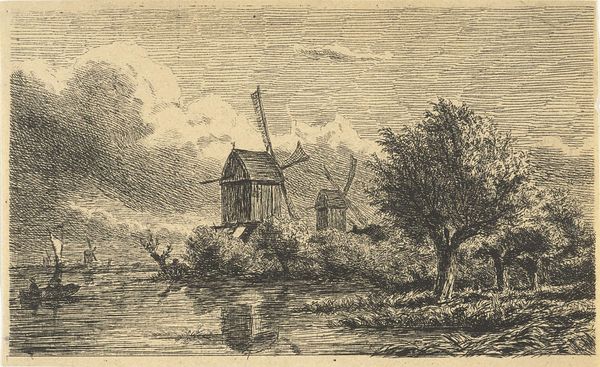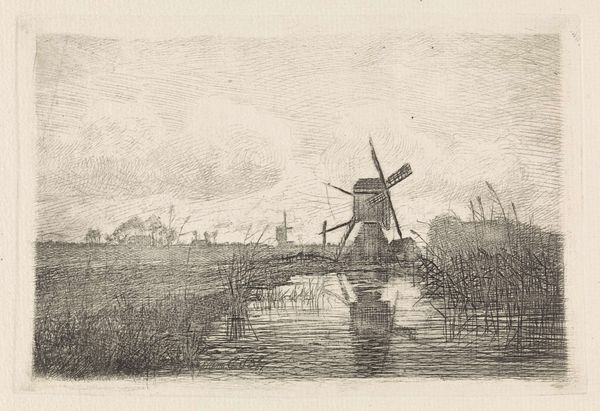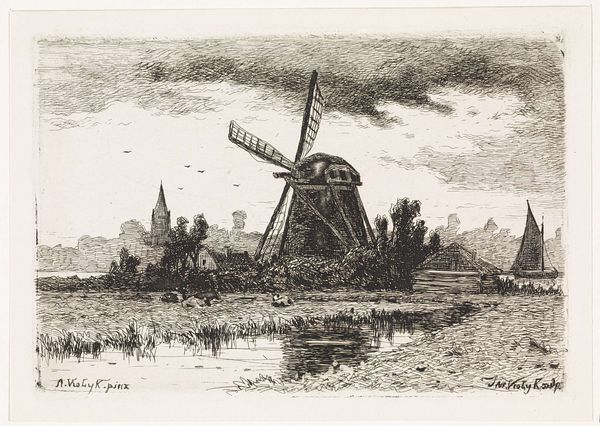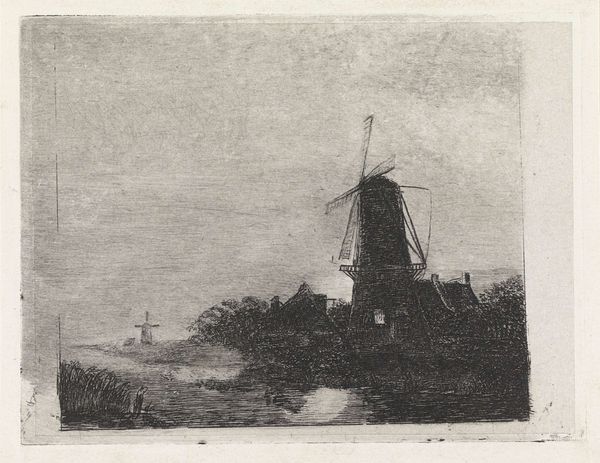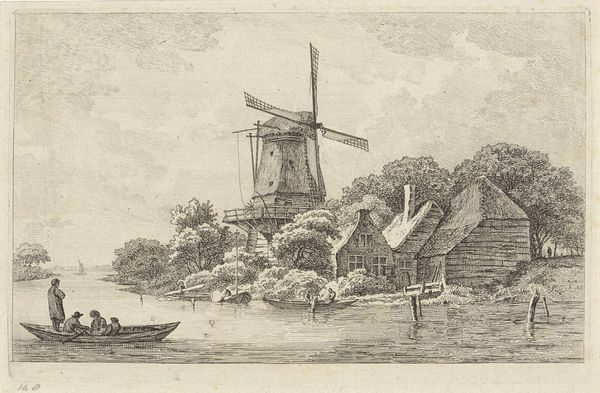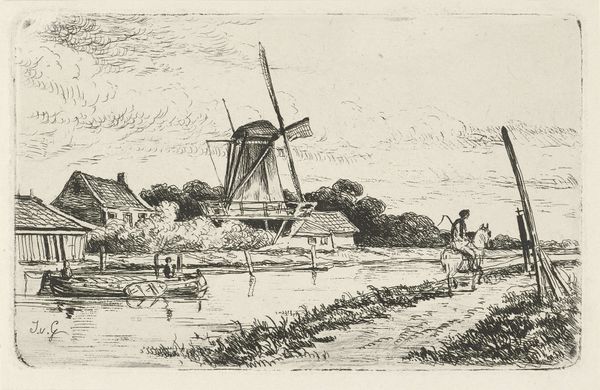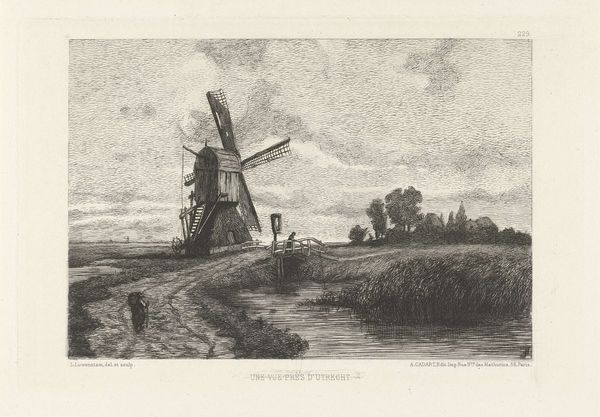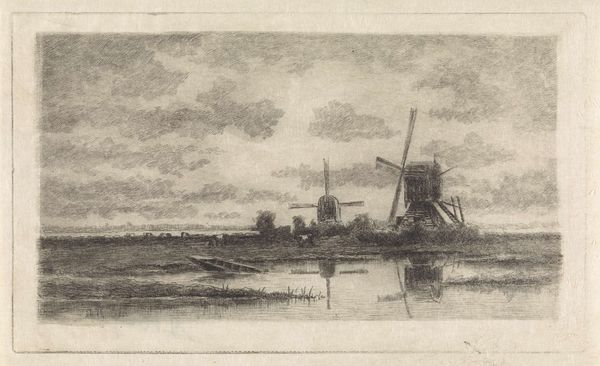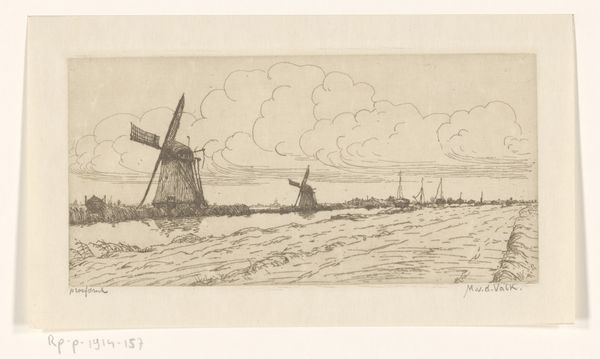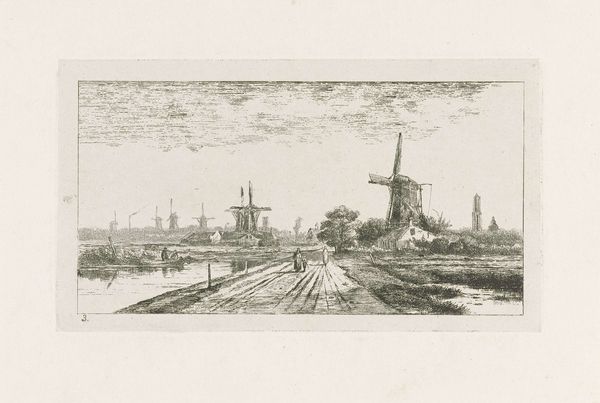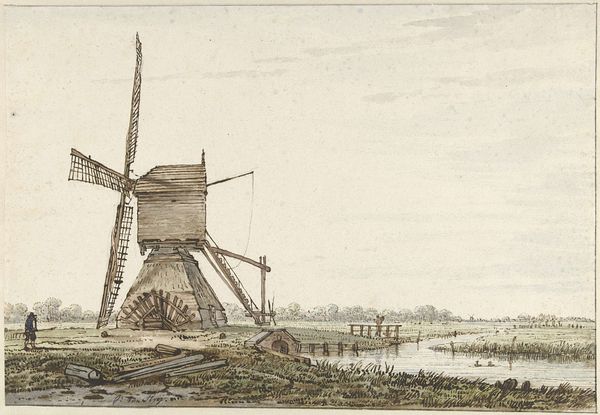
print, etching
#
dutch-golden-age
# print
#
etching
#
landscape
#
line
#
realism
Dimensions: height 155 mm, width 210 mm
Copyright: Rijks Museum: Open Domain
Willem Oppenoorth made this etching of a mill in Barneveld using a metal plate, likely copper or zinc. He would have covered the plate with a waxy, acid-resistant ground, then scratched an image into it with a sharp needle, exposing the metal. When the plate was immersed in acid, the drawn lines were etched into the surface. The plate was then inked, and the surface wiped clean, leaving ink only in the etched lines. Finally, it was pressed onto paper, transferring the image. The network of fine lines creates a full tonal range, with the density of marks building a rich, dark sky over the landscape. This method of printmaking allowed Oppenoorth to investigate the social context of the Dutch landscape, its industrialization and agricultural modes of production. With its meticulous facture and reproducible nature, we can appreciate how the artist utilized the etching process to highlight the relationship between labor, landscape, and industry in the late 19th century. This piece encourages us to consider the artistic value in prints such as this, challenging established hierarchies between art and craft.
Comments
No comments
Be the first to comment and join the conversation on the ultimate creative platform.
